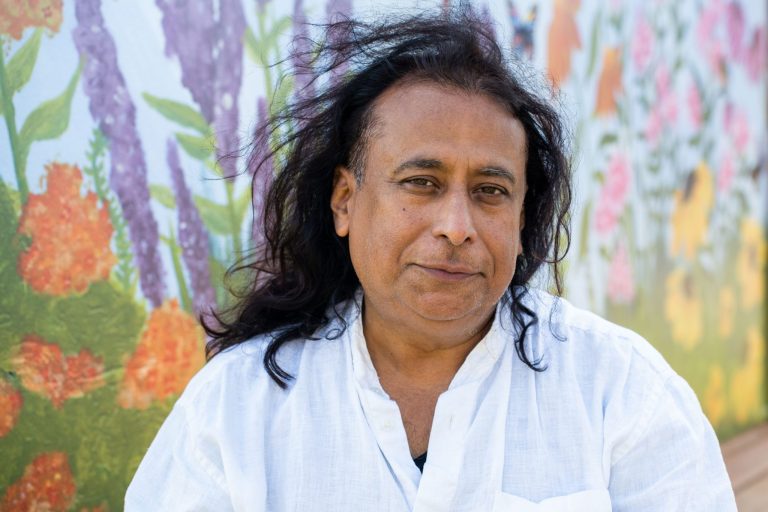
ምድብ:የውጤት ታሪክ8 ደቂቃ ተነቧል
ምድብ:የውጤት ታሪክ8 ደቂቃ ተነቧል
A community housing organization and a business alliance might seem like unlikely grantees for arts funding, but that’s exactly what Duluth’s የአሜሪካን ኢንዲያን ማህበረሰብ መኖሪያ ቤት ድርጅት (AICHO) and St. Paul’s Minnesota Indigenous Business Alliance are.
Reaching beyond canonized conceptions of what art is into a broader understanding of the many ways, shapes, and forms that artists contribute to a vibrant Minnesota was key to the strategic refresh that McKnight’s arts program underwent in 2021. It took place in the wake of George Floyd’s murder and the pandemic that wreaked havoc on the lives of Minnesota artists. What rang most clear was the need to address equity and justice in the changemaking work of its Arts & Culture program. The result was the program’s current emphasis on bringing culture bearers into the fold.
We’ve learned from our partners that Indigenous and Hmong cultures—two significant cultural communities in Minnesota—don’t have a word for “artist”. Instead, as Steven StandingCloud (Red Lake Ojibwe tribal member), an artist who has exhibited work at AICHO, explains: “art to us is in everything we do. It’s just a part of our spirituality.” What’s unique about cultural expression is its broadness, its ability to apply to a business alliance and a housing organization as conduits for culture, connection, and impact just as much as it applies to Bemidji’s Miikanan Gallery.
Community and education are pillars at Miikanan, the first gallery of its kind in the region flanked by three Ojibwe reservations. “There’s stereotypes that we have to deconstruct and change,” says Karen Goulet (White Earth Ojibwe tribal member), the gallery’s program director. Giving priority to Ojibwe artists and projects, “we wanted a space where Indigenous artists could be recognized and celebrated for the work that they do, and a place where Indigenous art could be made more available to the public,” Goulet says.
Video produced by Line Break Media
Since its launch in 2017, the gallery has been committed to lacing education into all of its shows. “All of our exhibits have programming that accompanies them—maybe a workshop or a video or someone giving a lecture. We try to find ways to give people in the community a chance to learn more about the art and the artists we exhibit.”
Miikanan’s efforts are making a difference. Goulet says that Miikanan has acted as a launchpad for many of the artists who have shown their work there, thanks in part to support from the gallery and the staff working there who provide help with portfolio development and grant and fellowship applications.
But it’s not a one-way street—the artists give back, too. One way is through the gallery’s summer youth program where Indigenous youth get a chance to work alongside and learn from professional Indigenous artists. “It’s really vital to have a place in your community and to be recognized for the talent you have. That’s what’s really empowering,” Goulet says.
The work of the Mnisota Native Artists Alliance, operated by the Minnesota Indigenous Business Alliance (MNIBA), flows in much the same empowerment-focused, community-centric vein. “We wanted to create a voice across the state so that artists could come together and define what’s important to them,” explains Pamela Standing (Cherokee tribal member), executive director of MNIBA, which launched the artist alliance in 2021. “Cultural appropriation is a big issue. The other one is the inequitable distribution of funding.”
According to a 2017 report from the Helicon Collaborative, just 2 percent of all arts and cultural institutions, usually those with the largest budgets and located in metropolitan areas, received nearly 60 percent of all contributed revenue. That’s why funding organizations like the Mnisota Native Artists Alliance, which support Indigenous artists across Minnesota, matter so much.
“Artists and culture bearers provide guidance in uncertain times and exert leadership in movements for justice and equity,” says Caroline Taiwo, an Arts & Culture program officer at McKnight. “If we invest in artists and culture bearers and support enabling environments for them to thrive, more communities across the state will be better able to achieve a more creative and abundant future where people and the planet thrive, too.”
Helping Indigenous artists thrive is core to Mnisota’s work. In addition to nearing completion on an artist manifesto designed to help guide how Indigenous artists interact as well as how to work with allies, the Alliance also held an appropriation conference with the Northeast Minneapolis Arts Association. “There’s a difference between appreciation and appropriation and it’s a really fine line. We have a couple of women artists who are working on a statement about appropriation right now because we want to define it ourselves, not have it defined for us,” Standing says.
The Alliance is also hard at work compiling a master spreadsheet of all of its different artists by practice, from bead art to graphic designers, muralists, and painters. “It’s all about making our work and our populations visible,” she adds.
LeAnn Littlewolf (Leech Lake Ojibwe tribal member), and AICHO’s executive director, agrees that visibility is critical. “There’s value in finding ways to be visible because we’ve been invisible for so long,” she says. “We have a lot of people who don’t grow up with traditional cultural practices. Those are the missing pieces. We’re putting those back in place.”